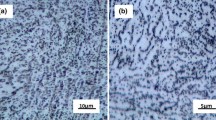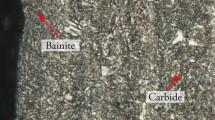Abstract
A hydrostatic pressure-cycling technique developed to permit controlled fatigue precracking of large spin-burst fracture-toughness specimens (disks in excess of 12 in. in diameter and 3 in. long) is described. The procedure involves localized internal-pressure cycling of the specimens by varying the hydrostatic pressure within a small “notched” hole. The technique is capable of generating hydrostatic pressures in excess of 40,000 psi at an operating frequency of one pressure cycle per second. In addition, the cyclic stresses are independent of specimen size, provided thick-wall pressure-vessel conditions exist. An ultrasonic flaw-detection technique used to measure the extent of fatigue-crack growth during cyclic loading is also described.
The pertiment data associated with the fatigue precracking of eight alloy steel (σys ≈ 85,000 psi) spin-burst specimens approximately 13 in. in diameter and 10 in. long are presented. The effectiveness of pressure cycling and the accuracy of the crack-monitoring technique are discussed. At a cyclic load range of 8000 to 40,000 psi, fatigue cracks on the order of 0.3 in. long were developed in approximately 60,000 cycles (17 hr). The ultrasonic crack-length-measurement technique was found to exhibit a sensitivity of 0.030 in.
Similar content being viewed by others
References
Winne, D. H., and Wundt, B. M., “Application of the Griffith-Irwin Theory of Crack Propagation to the Bursting Behavior of Disks, Including Analytical and Experimental Studies,” ASME Paper 57-A-249 (December, 1957).
Sankey, G.O., “Spin Fracture Tests of Ni-Mo-V Rotor Steels in the Brittle Fracture Range,”Proc. ASTM,60,721–736 (1960).
Brothers, A. J., Newhouse, D. L., and Wundt, B. M., “Results of Bursting Tests of Alloy Steel Disks and Their Application to Design Against Brittle Fracture,” General Electric Corporation Report GER-2218, presented at the 68th Annual Meeting of ASTM (June, 1965).
Yukaw, S., and McMullin, J. G., “Effects of Specimen Size and Notch Acuity on the Brittle Fracture Strength of a Heat-Treated Steel,” ASME Paper 61-Met-2, presented at the Metals Engineering Conference (April, 1961).
Wessel, E. T., “The Influence of Pre-Existing Sharp Cracks on Brittle Fracture of a Ni-Mo-V Forging Steel,”Trans. ASM,52,277 (1960).
Srawley, J. E., and Beachem, C. D., “Crack Propagation Tests of Some High-Strength Sheet Steels,” NRL Report 5263 (Jan. 10, 1959).
Brown, W. F., Jr., and Srawley, J. E., “Plane Strain Crack Toughness Testing of High Strength Metallic Materials,” ASTM Special Technical Publication No. 410 (December, 1966).
Roark, R. J., “Formulas for Stress and Strain,” 4th Ed., McGraw-Hill, 377 (1965).
Clark, W. G., Jr., Unpublished Westinghouse Research Laboratories Data.
Sankey, G. O., “Spin Tests To Determine Brittle Fracture Under Plane Strain,”Experimental Mechanics,8, (12),529–538 (1968).
Author information
Authors and Affiliations
Rights and permissions
About this article
Cite this article
Clark, W.G., Ceschini, L.J. Fatigue precracking of spin-burst toughness specimens. Experimental Mechanics 9, 123–128 (1969). https://doi.org/10.1007/BF02327698
Issue Date:
DOI: https://doi.org/10.1007/BF02327698




